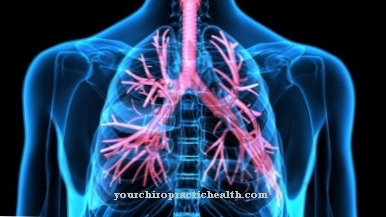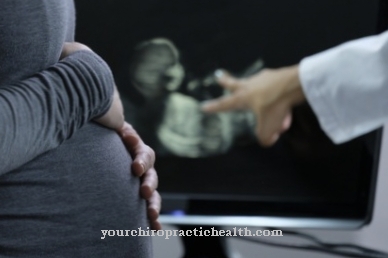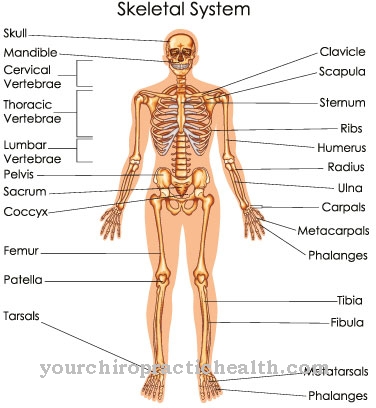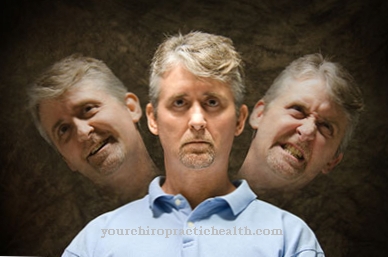The Coffin-Siris Syndrome is a congenital malformation syndrome with the main symptom short stature. The syndrome is caused by a genetic mutation that usually occurs sporadically. The therapy focuses on treating epilepsy.
What is Coffin Siris Syndrome?

© rob3000 - stock.adobe.com
There are various subgroups of the so-called malformation syndromes. For example, some malformation syndromes are predominantly associated with short stature. Coffin-Siris syndrome belongs to this subgroup. This is a congenital disease which, in addition to short stature, is associated with hypoplasia of the limbs, intellectual disability and nail hypoplasia.
The complex of symptoms was first described in 1970. The authors of the first description are the American pediatrician G. S. Coffin and the radiologist Ev. Siris, whom the syndrome is named in honor. The frequency for the syndrome is reported to be less than one case in 1,000,000 people.
The syndrome is genetic and can be inherited. However, the disease occurs much more sporadically and is hardly associated with familial accumulation. If there is familial accumulation, the inheritance is evidently autosomal recessive.
causes
Coffin-Siris syndrome is genetic. More precisely, the complex of symptoms is caused by a genetic mutation, which in most cases corresponds to a new mutation. The disease is based on mutations at locus 7q32-q34 in most patients.
Mutations in the SOX11 gene, which is located on locus 2p25.2, have also been found in some of those affected. Mutations in the ARID1A gene, the ARID1B gene, the SMARCA4 gene, the SMARCB1 gene and the SMARCE1 gene are also associated with the disease. These genes code for the individual units of the so-called SWI / SNF chromatin remodeling complex. This complex corresponds to a group of proteins that modify and rearrange the packaging of DNA.
In the event of mutations in the coding genes, the protein complex loses its physiological shape and thus part of its function. The exact relationships between the individual symptoms of the Coffin-Siris syndrome and the functions of the protein complex have not yet been conclusively clarified.
Symptoms, ailments & signs
Patients with Coffin-Siris syndrome suffer from a complex of different symptoms. The pronounced short stature of those affected is the main symptom. In the uterus, the first growth retardation occurs, which also affects the skull area. Microcephaly or brachycephaly can develop.
In addition, many patients with the syndrome suffer from epilepsy. The body hair of those affected is noticeable. In addition to sparse hair on the baby's head, there may be hypertrichosis on the back. The same applies to the areas of the upper arm and thigh. Some facial abnormalities are characteristic of Coffin-Siris syndrome.
These include bushy brows, the epicanthus and an abnormally narrow eyelid. Often the babies cross-eyed and also have a broad and unusually short nose. The philtrum has passed. Macroglossia is also often present. The teeth and enamel are underdeveloped. The ears are often deformed.
The phalanges as well as the nails are hypoplastic. In addition to clinodactyly, additional symptoms can include excessively mobile joints in the context of hip dislocations, retarded bone age or frequent infections of the respiratory tract. Symptoms such as scoliosis or an underdeveloped breast are less common.
Diagnosis & course
The doctor makes the diagnosis of Coffin-Siris syndrome primarily on the basis of clinical findings. Investigations of the genetic material can provide evidence of the typical mutations and thus secure the diagnosis. Imaging methods show various abnormalities, above all heterotopias and low gyration.
In the differential diagnosis, Nicolaides – Baraitser, BOD syndrome, DOOR syndrome, Mabry syndrome, Rubinstein-Taybi syndrome and Cornelia de Lange syndrome must be excluded. The prognosis for the patient depends on the severity of the severity in the individual case.
Aspiration pneumonia in particular is a risk associated with an unfavorable prognosis. Epileptic seizures can also affect the prognosis.
When should you go to the doctor?
In most cases, the Coffin-Siris syndrome is clearly short stature. This does not require a special diagnosis, and direct treatment is usually not possible.
However, the Coffin-Siris syndrome must be monitored by a doctor in any case, as this can lead to epileptic seizures. In the event of an attack, you must definitely go to the hospital or call the emergency doctor. The earlier the Coffin-Siris syndrome is diagnosed, the higher the chances of a positive course of the disease.
In the case of small children, a doctor should be consulted when they cross-eyed or when various malformations of the ears occur. Frequent infections of the respiratory tract can also indicate the Coffin-Siris syndrome and should also be examined and treated. Usually, Coffin-Siris syndrome can be diagnosed by a pediatrician. The further treatment, however, depends on the severity of the symptoms and is carried out by the respective specialist.
Doctors & therapists in your area
Complications
Due to the Coffin-Siris syndrome, there are various complications that can arise in the course of life. In most cases, epilepsy is the main complication and is therefore treated primarily. The affected person suffers from short stature and malformations in the area of the skull with Coffin-Siris syndrome.
Due to the malformations and growth disorders, children can become victims of bullying and teasing, which often leads to psychological problems. As a rule, almost all patients with Coffin-Siris syndrome are affected by epileptic seizures. In the worst case, these can lead to death and represent a very severe impairment for the person concerned.
The eyes, ears and lungs are also affected by Coffin-Siris syndrome and can show malformations. The airways themselves are very susceptible to infection. The life expectancy is mostly reduced by the disease. Treatment for Coffin-Siris syndrome is primarily designed to relieve symptoms and cannot cure the disease completely.
First and foremost, epilepsy and respiratory infections are treated so that they do not restrict the patient's everyday life too much. The parents of those affected are also severely affected by the syndrome and complain of psychological conditions that can be treated by a psychologist.
Treatment & Therapy
Genetic therapies are a current research subject in medicine. So far, however, the approaches to gene therapy have not reached the clinical phase. Genetic diseases remain incurable until they are in the clinical phase. Since no causal therapies are currently available, the Coffin-Siris syndrome is treated purely symptomatically.
The therapy is based on the symptoms in the individual case. Epilepsy in particular must be treated symptomatically. In addition to the conservative drug methods, invasive surgical treatment options are also available in some cases. The respiratory tract infections are usually treated with antibiotics.
The facial abnormalities can be corrected through surgical interventions. Usually the patients also receive physiotherapeutic care in order to build up muscles and thus stabilize the hypermobile joints. Early intervention can also be used to promote mentally normal development. The hypoplasias of the phalanges require surgical intervention.
Those of the nails can be balanced with a transplant. Since the nail abnormalities are primarily a cosmetic problem, early intervention is usually not absolutely necessary. The parents of affected children receive instructions on how to prevent respiratory infections and the aspiration of food.
Outlook & forecast
Since the Coffin-Siris syndrome is a genetic disease, the cause cannot be treated. A complete cure is not possible with this disease. Only some symptoms of the syndrome can be limited, with epilepsy being treated in the foreground. With proper treatment, there is no decrease in patient life expectancy.
Since those affected often suffer from respiratory infections, they are significantly restricted in their everyday life. Malformations appear on the ears and teeth, which can reduce the aesthetics. However, these malformations can be corrected well through surgical interventions. Squinting is usually corrected with glasses.
In Coffin-Siris syndrome, epilepsy is only treated symptomatically. The frequency of epileptic seizures can be reduced with the aid of medication, although it is not possible to predict the next epileptic seizure. Discomfort on the nails is relieved by transplants, whereby there are no further complications or discomfort. As the breathing difficulties can lead to difficulties in taking food and fluids in childhood, the parents are dependent on a special therapy. These complaints usually no longer occur in adulthood.
prevention
The Coffin-Siris syndrome cannot actually be actively prevented. Genetic counseling in family planning can prevent a possible mutation on the basis of familial accumulation. However, since the syndrome usually occurs sporadically and the external influencing factors are so far unknown, this preventive measure is not considered particularly safe.
Due to the intrauterine growth disorders, a diagnosis can possibly already be made by fine ultrasound. The deformity ultrasound gives the expectant parents the opportunity to decide against the unborn child.
Aftercare
Follow-up care for Coffin-Siris syndrome is somewhat difficult. Not much can be done about short stature and all the symptoms that go with it. The Coffin-Siris syndrome is also characterized by other complex symptoms such as hypoplasia of the limbs and nails, various malfunctions and a reduced intelligence.
The lack of effective assistance also applies to these. Coffin-Siris syndrome may later be a disease that gene therapy could cure. At best, symptomatic action can be taken against the many health disorders caused by the genetic defect.
For example, if an epilepsy is present, a treatment strategy can be selected that controls those affected by means of close monitoring measures. The subsequent therapy may have to be adapted to current developments. In addition, doctors and nurses have to be careful that patients do not get pneumonia from accidentally inhaling food.
It has been shown in people with Coffin-Siris Syndrome that both epileptic seizures and aspiration pneumonia and other emergency situations can lead to hospitalization. The aftercare deals with the processing of acute events and the further treatment according to the situation.
The focus of this disease is also in the aftercare to alleviate the symptoms. Improving the quality of life should also be a priority in Coffin-Siris syndrome. The life expectancy of those affected is reduced in view of the severity of the genetic defect.
You can do that yourself
Coffin-Siris syndrome is genetic. The patient or his relatives cannot take any measures to treat the cause of the disorder. However, self-help measures can be taken against some of the symptoms.
If the typical short stature is accompanied by intellectual retardation, parents must ensure that their child receives optimal early support. Educational and psychological measures can help the child's intellectual abilities to develop better.
If there is no or only a slight mental disability, those affected usually suffer very much from their conspicuous external appearance. Excessive body hair can be removed using various cosmetic procedures. In the meantime, parts of the body that are too hairy can also be epilated permanently using a laser.
Deformities or misalignments of the teeth are also common. In these cases, a dentist specializing in aesthetic treatments should be consulted at an early stage. The deformity of the nails that is often observed can be remedied with the help of plastic surgery.
The short stature is often accompanied by excessive mobility of the joints, which can impair the patient's mobility. In order to prevent or at least mitigate this, physiotherapy should be started at an early stage, which aims to stabilize the affected joints through the targeted build-up of muscles.
If the person concerned is mentally suffering from the symptoms of their illness, the timely consultation of a psychotherapist is an important step towards self-help.













.jpg)

.jpg)
.jpg)











.jpg)